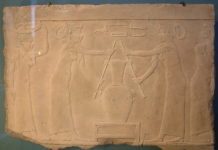The history of making New Year’s resolutions dates all the way back to the time of ancient Rome. The Romans are responsible for the majority of the modern calendar and for the tradition of making resolutions on New Years.
Celebrating the new year has been a tradition for thousands of years and is arguably the oldest celebrated holiday. The ancient Babylonians were the first to hold celebrations for the new year over 4000 years ago though they did not begin the tradition of making resolutions on that day.
New Years has not always been celebrated on January 1st and it’s not celebrated on that date everywhere today. The Roman and Gregorian calendars are both solar calendars that hold the new year on January 1st. Lunar calendars such as the Chinese calendar would hold the new year on the first full moon of the year.
The Romans and the Tradition of Resolutions
In the early Roman Empire the new year was celebrated in March. This made sense to the Romans because it marked the beginning of spring and the planting of the first crops.
In 153 BCE Janus, a mythical king of early Rome was placed at the head of the Roman calendar by the Roman Senate. In legend Janus had two faces which he used to look to the future and the past. Since it was believed that Janus could forgive transgressions, many Romans would give gifts and make promises at the beginning of the new calendar year. Their belief was that Janus would see this and then bless their life for the entire year.
Over the next years, each Caesar made his own changes to the calendar. The official date of New Year’s switched from January to March and back again several different times over this time period.
Julius Caesar Solidifies the Calendar
In 46 BCE Julius Caesar changed the Roman calendar in order to make it align more evenly with the seasons and to make further changes impossible. Caesar made January 1st the official beginning of the next year. A legend began that on the last day of December at midnight Janus would see the past year and the next year at the same time. Romans began making promises to Janus on the last day of December in the hopes that he would see their sincerity and help them attain their goals.
The legend continued on after the Roman Empire was dissolved. During the Middle Ages Christian powers attempted to remove the Roman traditions from the calendar. Christians proclaimed the new year to be December 25th in order to celebrate it with the birth of Christ.
In the sixteenth century, Pope Gregory XIII revised the Julian calendar and the new year was once again celebrated on January 1st. The tradition of making resolutions once again surfaced while the mythical element of Janus was removed.








